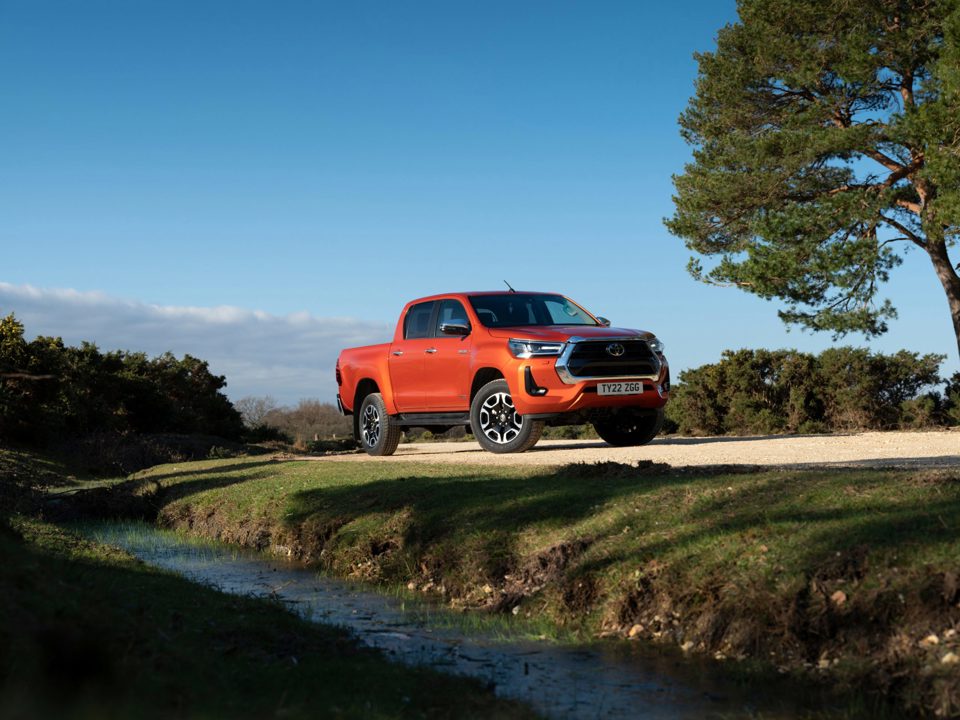The Advertising Standards Authority (ASA) has labelled an advert for the Toyota Hilux as irresponsible following a complaint.
A paid for Facebook post and a poster ad for Toyota came with an accompanying video that showed a wide open plain with mountains either side.
A swarm was depicted from a distance moving across the plain, causing dust to rise.
A number of SUVs were then shown moving across the landscape in unison before joining a tarmacked road, while a voiceover said, “one of nature’s true spectacles”.
The vehicles were then shown on the road, side by side, and driving through a built-up city area with a single vehicle then shown reversing up a driveway.
The poster, seen at a bus stop, stated, “born to roam”, with an image showing two SUVs driving on a rocky incline in a savannah style landscape. Around 50 identical SUVs appeared in a large pack on a hilly background.
However, Adfree Cities claimed that the ads condoned behaviour that was harmful to the environment and challenged whether they were irresponsible.
In response to the complaint lodged with the ASA, Toyota (GB) explained that the ads had been through a thorough checking process for both technical capability claims and wider generic claims for the vehicle and/or the brand.
It said the footage of the vehicles off-road in the video was minimal and when they appeared they were never in an environment which was ecologically sensitive or a habitat with wildlife.
Furthermore, it said that the terrains depicted in the ads were all areas for which the vehicle was designed. The Hilux was meant for the toughest environments and certain industries had a genuine need for off-road which included specialised workers such as farmers, forestry workers and park rangers.
Toyota argued they were entitled to advertise to those markets and should be allowed to depict suitable off-road environments to demonstrate the off-road capabilities of the vehicle.
In addition, it said that if ads were able to show cars on race tracks or circuits, then off-road environments should also be permissible.
It also explained that the use of multiple vehicles, which they believed was clearly fantastical, added to the argument that a viewer was unlikely to replicate the ad in the UK countryside.
They explained that despite the Hilux’s off-road capabilities, and the need to make specialised purchasers aware of that, they limited the off-road footage because of their dedicated environmental stance and consideration for social responsibility.
They said as a result, based on screen time, the emphasis of the ad was not on the off-road scenes.
Toyota believed no reasonable viewer would have understood the ad as encouraging UK consumers to drive irresponsibly in the UK countryside and cause environmental harm.
It added that the slogan ‘born to roam’ was intended to reflect the ability of the car to operate off-road and cope with different terrain.
Toyota said it would not be interpreted as encouraging or excusing driving behaviour that was negative to the environment. It explained that an off-road vehicle by definition was one used for rough terrain and the slogan ‘born to roam’, alongside the images and videos, visually represented that definition.
However, the ASA, upheld the complaint saying that communications must be prepared with a sense of responsibility to consumers and to society.
It acknowledged Toyota’s comments that the sheer volume of cars in the ads would lead viewers to interpret the scenes as fantastical and not as a portrayal of real-world driving.
However, it said that the scenes that followed showed a much smaller number of cars at close-up, driving realistically at speed across an untarmacked, off-road landscape including across a river.
Toyota had explained that some of the rural scenes were on roads or unpaved tracks. However, that was not clear in the ad, said the ASA.
The emphasis of the ads was on the off-road settings displayed and the vehicle’s movement without restriction, which was highlighted by the messaging, “one of nature’s true spectacles” and “born to roam”.
The latter scenes saw the vehicles driving realistically on roads, and in heavily built-up urban settings, with a final scene again depicting one vehicle parked in an off-road landscape.
The vehicles in the video travelled across untarmacked plains and through rivers, with dust and scree visibly disturbed, said the ASA, while in the poster ad the main vehicle appeared on a rocky slope, and other vehicles in the background travelled across similar terrain as seen in the video.
While the ASA acknowledged Toyota’s point that they were in part targeting specialised vehicle users, such as farmers or forest workers, who might legitimately need to use vehicles in rural or off-road environments, those scenarios were not represented in the ad, which included driving by unidentifiable categories of vehicle users in both rural and urban environments.
The ASA considered that the impression given by the driving scenes and messaging in both ads was one of driving regardless of its purpose, across off-road environments and natural ecosystems which had no regard for the environmental impact of such driving.
The ads, it ruled, presented and condoned the use of vehicles in a manner that disregarded their impact on nature and the environment.
As a result, they had not been prepared with a sense of responsibility to society, breaching codes of compliance.
The adverts must not appear again in the form complained of, said the ASA, and Toyota must ensure future marketing contained nothing that was likely to encourage irresponsible behaviour towards the environment.






















martinwinlow - 22/11/2023 13:57
The 'artistic license' used here seems reasonable, given the context. "Self-charging' hybrid vehicles on the other hand is perfectly fine according to the UK's Advertising Standards Agency. Clearly, their physics lessons were different to mine...